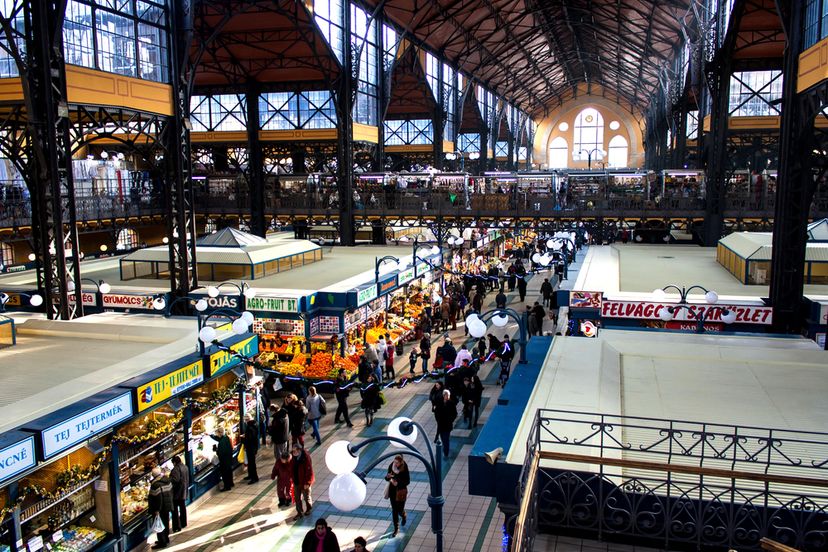
Located on both sides of the Danube River, Budapest combines two cities, Buda and Pest and has been the cultural, political and commercial center of Hungary for almost 20% of the nation’s total citizens that call this city home. This city has survived catastrophe since its inception, each time returning stronger than before and has flourished since Hungary’s free elections in the 1990’s. Budapest still retains its historical charm with the culture, architectural details and antique structures that still remain, but also displays vibrant growth. EscapeHere has assembled a list to consider when planning your visit to this ancient, important European city.
Advertisement
10. Drink Coffee
Seriously, coffee is a cultural touchstone with the residents of Budapest, and they take their version of the strong dark drink as seriously as any other cafe culture city. Almost all Hungarians start their day with super strong espresso, and many more are consumed during the rest of the day. American style drip coffee isn’t really popular, with most coffee consumed in traditional coffee houses instead of franchises.
Cafes (or kávéház) have enjoyed a long tradition in Budapest, becoming popular in the 16th century during the Turkish occupation. During the Austro-Hungarian Empire in the 19th century Budapest boasted over 400 unique coffee houses in the city. Some of these cafes are famous for their history as the centers of intellectual and political progress, and many of the grand cafes have been restored, and the coffee culture preserved with it. Make sure to include the legendary Gerbeaud, located in the center of Budapest and one of the grandest and most traditional cafes in the city as part of your travels. Their famous confection is a sour cherry, drowned and aged in cognac and covered in dark chocolate.
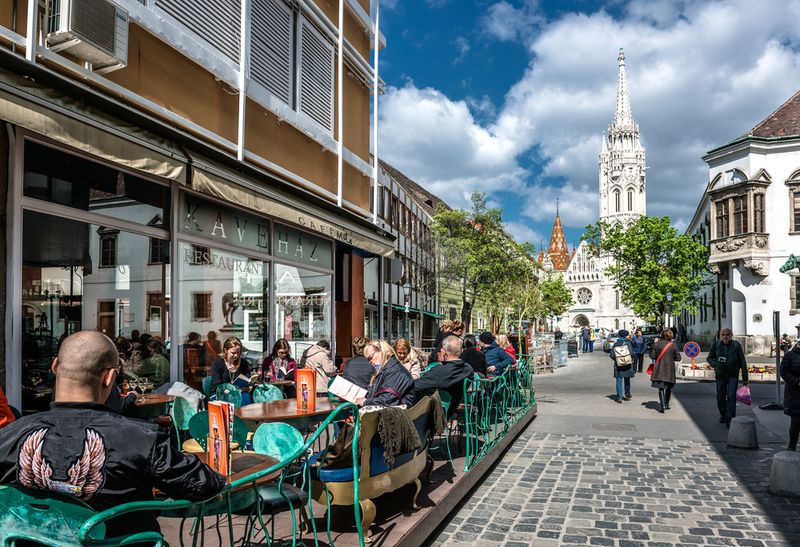
Advertisement
9. Go Underground
Choose from caves, cold war bunkers, underground tramways and prisons -under Budapest lays a treasure of haunts to explore. The same thermal springs that feed the famous Budapest baths also create a large network of over 200 caverns under the city. These caverns are unique because they are formed by rising subterranean water instead of rain erosion. The most famous caves open to the public are the Pál-völgyi Cave and the Szemlő-hegyi Cave.
Under the cobblestone streets of Castle Hill is the largest interconnected cellar system in Hungary. This town-sized network of tunnels consists of natural caves and man-made passages. The earliest signs of human existence in these tunnels can be dated back half a million years and was a place to store valuables and food during the Middle-Ages. These caves were used extensively during World War two and the Cold War (as a fallout shelter). Today you can visit parts of the cave system at the Hospital in the Rock Museum.
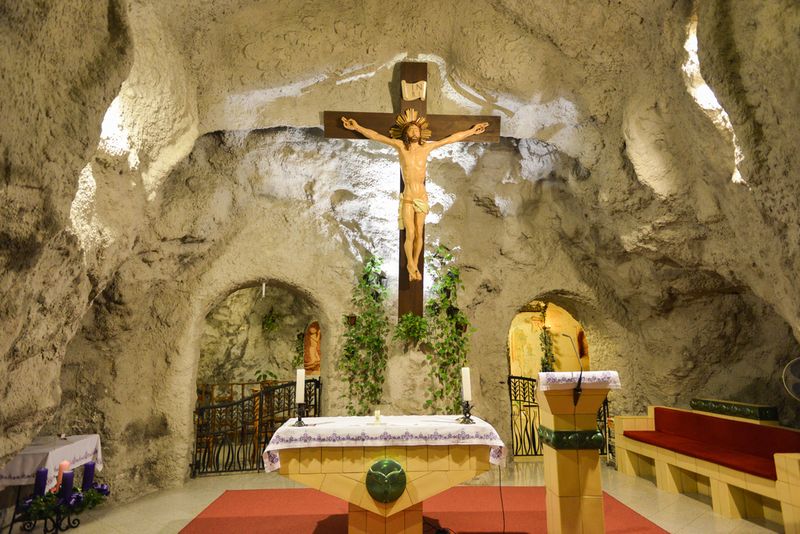
Advertisement
8. Explore Budapest’s Roman Roots
Western Hungary was part of the Roman Empire from the first century. BC to the fifth century AD and was known as Pannonia. At the center of Pannonia was its largest town, Aquincum, the ancestor of what is now Budapest. Aquincum was a military base, which was home to a Roman legion of 6,000 soldiers. What remains today is the excavated ruins of the old city which includes remains of an amphitheater, mosaic floors, statues and a reconstructed water organ as the main attractions available to tourists.
The ruins were first discovered in 1778 by a local winemaker, luckily, he recognized what he stumbled on almost immediately, preserving most of the find. In addition to the originally discovered ruins, the Hercules Villa, and Therma Majores (a large Roman bath complex) are also open to the public. Aquincum is found in the oldest part of Buda, Óbuda (it literally means Old Buda).
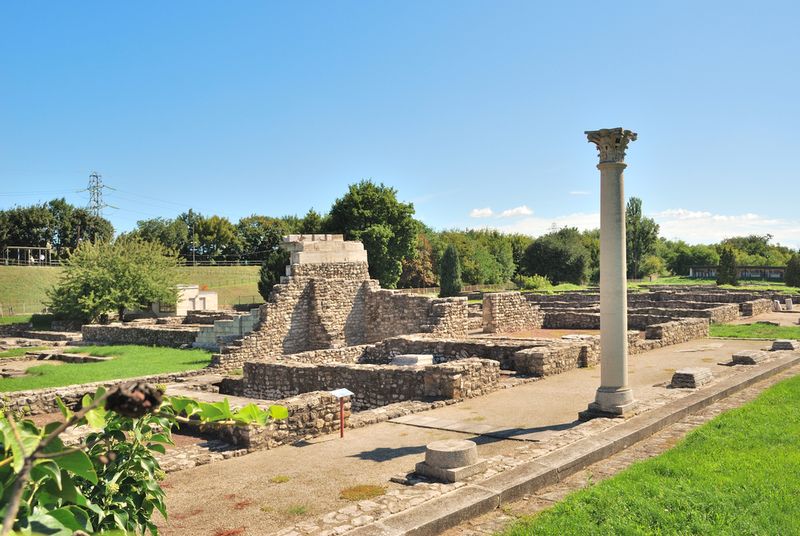
Advertisement
7. Dine Like a King
Budapest has always boasted a unique taste profile on the culinary landscape, but recently this city has been swept up in a gastronomical revolution. The recent growth of the gourmet restaurant scene has led to international recognition, like the famous Michelin guide’s Michelin Stars and Bib Gourmand. One of the Star winners is the Costes, which offers fusion cuisine of international and traditional Hungarian dishes prepared by the innovative head chef, Miguel Rocha Vieira.
Onyx, Budapest’s newest Michelin star recipient serves up unique versions of Hungarian dishes. Rich traditional dishes are served in small portions under the watchful eye of the executive chef (and cultural treasure), Szabina Szullo -the first Hungarian chef to receive a Michelin star. If you want something a little lighter on the wallet, consider Bock Bistro, a collaboration of award winning chef Lajos Bíro and vintner József Bock, where classic Dishes are paired with over two-dozen Bock wines and other vintages.
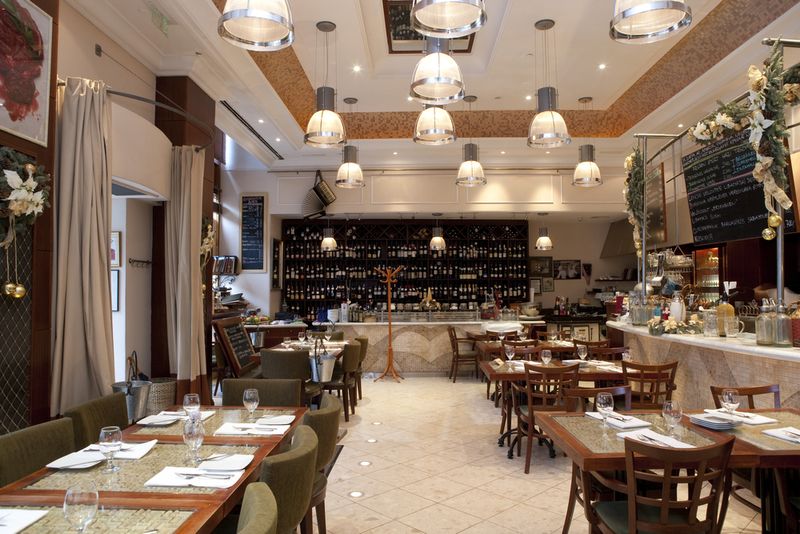
Advertisement
6. Look at Some Art
The Budapest Museum of Fine Arts is a great way to take in European culture in this fantastic city. Built in the neoclassical style, the museum building boasts an extensive collection of international art, the only catch being that they do not show Hungarian pieces. You can find The Museum of Fine Arts located next to Heroes’ Square and admission is around $8, they are open every day but Monday between 10am and 6pm.
If Hungarian art is what you are looking for, the best pieces in the country are kept in the Hungarian National Gallery. Located in Buda Castle, their collection consists of all genres, including nineteenth and twentieth-century Hungarian expats who worked in Paris and the United States. If you are looking for something more modern, the Ludwig Museum of Contemporary Art displays both Western and Hungarian works collected and selected from the last half century.
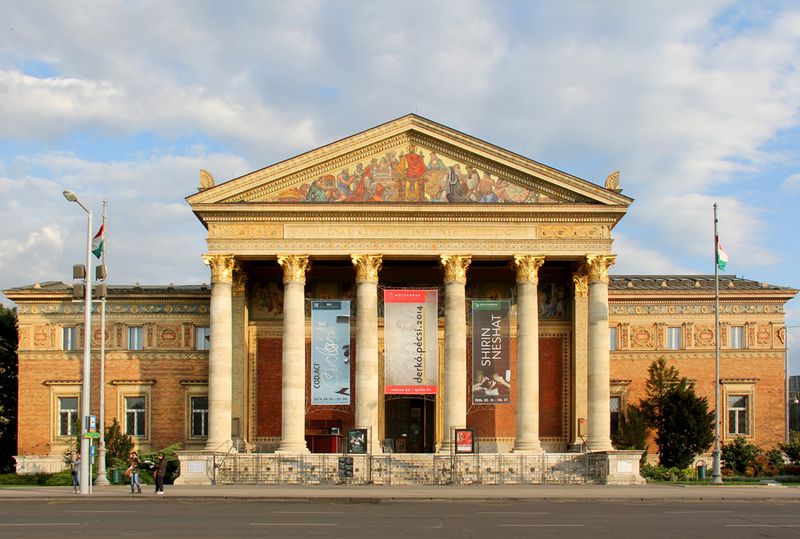
Advertisement
5. Take a Bath
Budapest is also known all over Europe as the “City of Baths”, Hungary is a land full of thermal springs, and Budapest is rich in thermal healing pools. Budapest is also one of the few places where you can still experience traditional Turkish baths like the ones from the 16th and 17th century. Turkish baths are pretty close to the Romans and Greek bathing practices, except that Turkish baths do not incorporate steam in their “hot rooms”.
If you want to visit some of the more famous baths, put Rudas, Király or Veli Bej on your list, for a true authentic experience. If you’re just looking to relax and enjoy something more contemporary, there are many health spa-resorts you can visit. If you have a need to be pampered, you can stay in one of several posh hotels with great Spa facilities like the Corinthia Grand Hotel Royal or the Continental Hotel Zara.
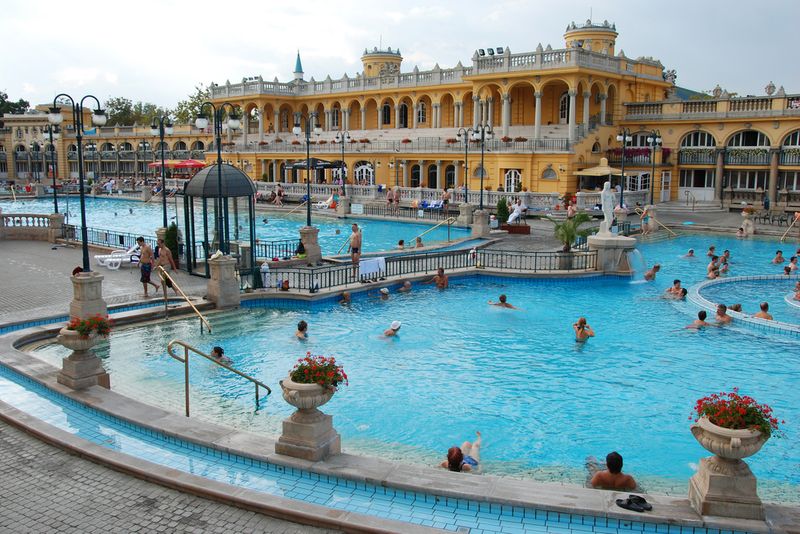
Advertisement
4. Visit St. Stephen’s Basilica
St. Stephen’s Basilica is the biggest church in Budapest, able to hold over 8000 people. According to architectural terms, this building should be classified as a cathedral, however Pope Pius XI only bequeathed it with the title ‘basilica minor’, a fact that has left some Hungarians a bit slighted. It took over 50 years to complete the structure due to the fact that the dome collapsed during construction and had to be completely rebuilt from scratch.
St Stephen’s dome is 96 meters high, the same height as the Budapest Parliament Building, which symbolizes the balance of church and state, although some could also argue that they have the same height because building regulations stipulate that no structure in Budapest can be taller than 96 meters. This building is named after St Stephen, its patron saint and the first king of Hungary. Creepy bonus fact: St Stephen’s mummified right hand is kept in a glass case to the left of the main altar in the chapel, so visit it and wave “hi”.
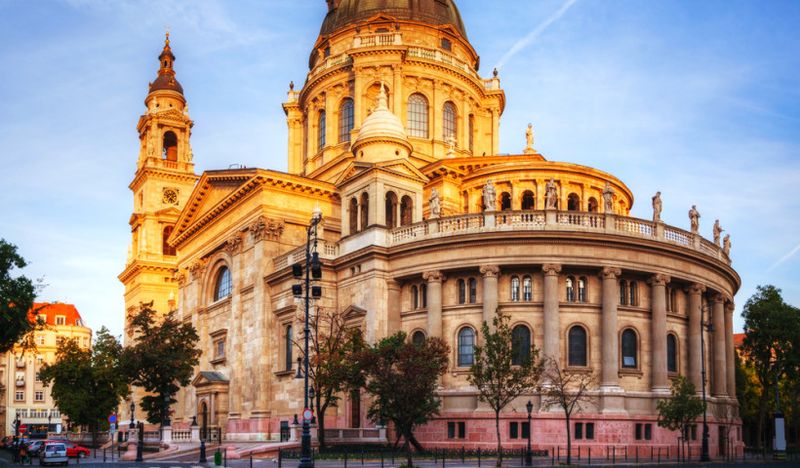
Advertisement
3. Attend the Sziget Festival
The Sziget is arguably one of the largest music festivals in the world, and the biggest annual party in Hungary with about 400,000 people attending every August for a week of music and partying. This event takes place on Óbudai-sziget (“Old Buda Island”), a 108-hectare island on the Danube and hosts over 1,000 performances every year. The festival started as a student event in 1993 and has grown to an event which boasts that half of its 400,000 visitors arrive from outside Hungary, with a dedicated “party-train’ that brings in festival attendees from all over Europe.
This Hungarian cultural phenomenon has been increasingly referred to as the European equivalent to the Burning Man festival due to its unique features and party community atmosphere. This year Robbie Williams, Florence and the Machine and Alt-J are already announced as main acts for the Sziget Main Stage with many more acts being announced as we get closer to the August event. This year will be full of amazing pyrotechnic, laser, and special effects as well as a gigantic EDM mega-tent. Buy your tickets here.
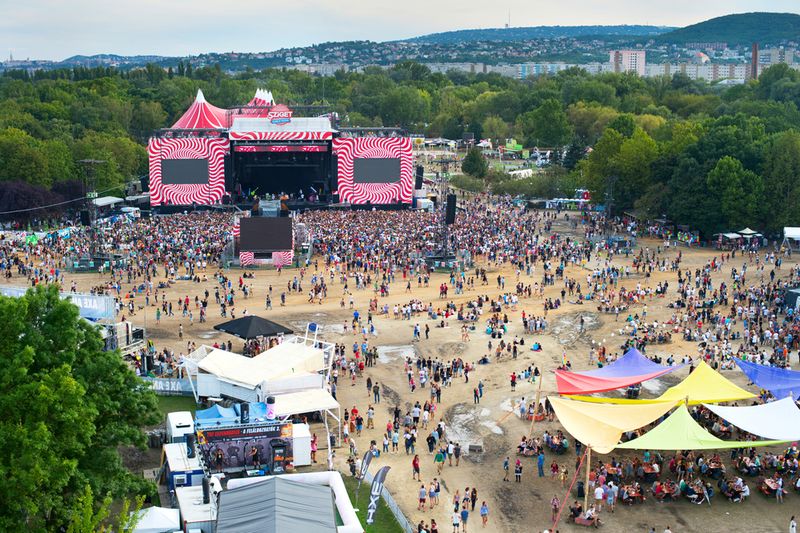
Advertisement
2. Drink Unicum in the Zwack Museum
Way back in 1790, Dr Zwack created a herbal digestive called Unicum to sooth the royal gurgling tummy of the Holy Roman Emperor and King of Hungary, Joseph the Second. From that moment on, Zwack and company have been the purveyors of the secret digestif (comprised of over 40 herbs) to the Hungarian royal family’s gurgling innards ever since. The company has survived 2 world wars, exile, state seizure and economic turmoil, remaining one of the most iconic liqueur brands in Europe.
When you visit the Zwack Museum, you can take in the treasury of 200 year old posters and Zwack personal memorabilia which not only tells you of the history of the beverage, but the personal family history as well. After taking in the relics from the past, you can descend into the 2.500 square meter cellars underneath the distillery, where, at the end of the tour, you can sample the classic Unicum or the Plum on tap from one of the oaken casks. Find out more at the museum website.

Advertisement
1. Visit the Központi Vásárcsarnok
Also known as the Central Market Hall, there is no better place to get your old pungent cheese and savory meat snack on in all of Hungary. The market is one of five market buildings that all opened on the same day on February 15, 1897, and remains the largest indoor market in Budapest. The original metal roof still exists to this day as a testament to the original builder’s skill, it is notable due to the famous Zsolnay Porcelain tiles which decorate it. Another fun fact: when the market first opened, ships sailed right into the building using special docks.
On the first floor, the market boasts a large selection of meats, cheeses, fruits and vegetables. Up on floor two, you can sample to your heart’s content at one of the many food stands which mix in with various vendors peddling handicrafts, clothing, art and souvenirs. There is also a section where Hungarian Paprika and Tokaji are sold on this level. In the basement there is a more modern fish market, a supermarket, and a small pharmacy.
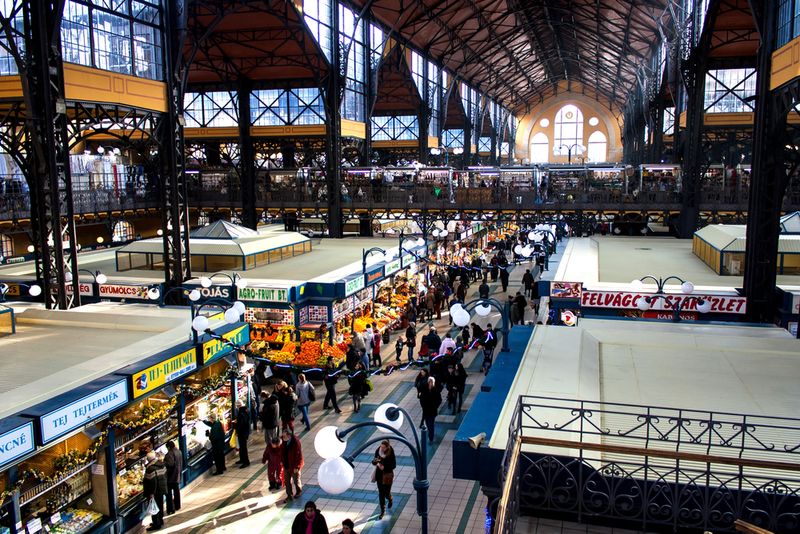
Advertisement